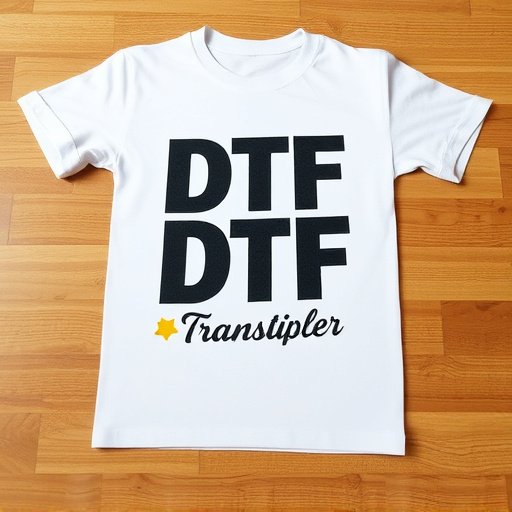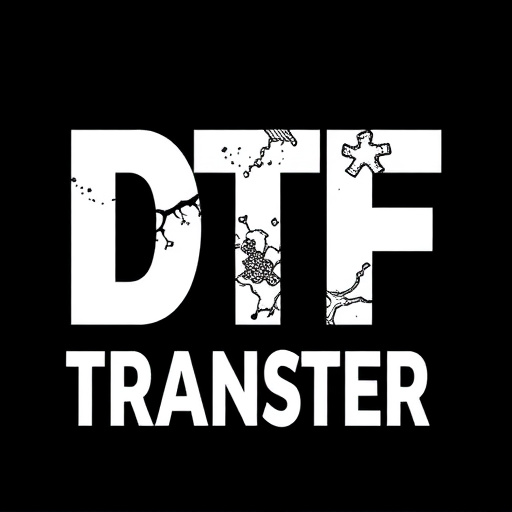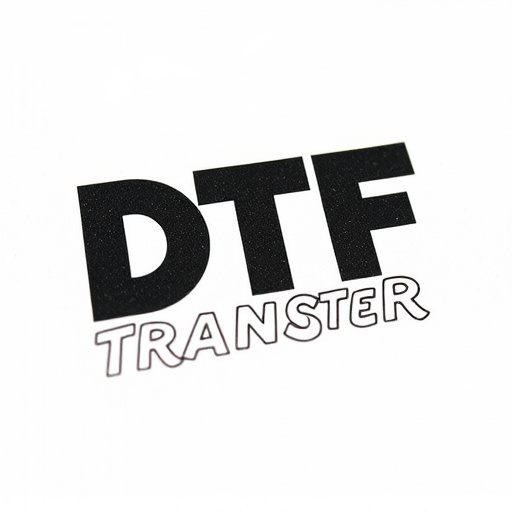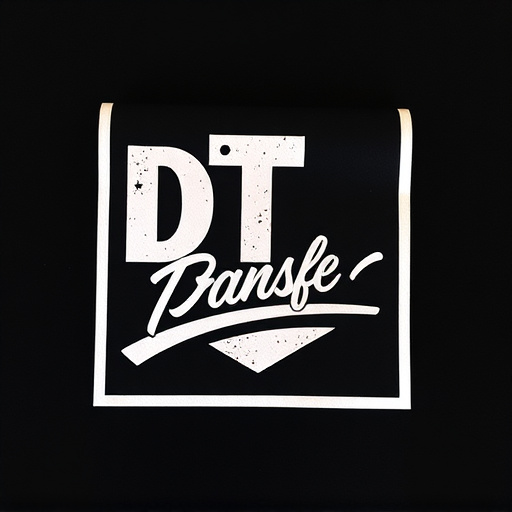Direct-to-film (DTF) transfers are revolutionizing visual capture with a cutting-edge, direct printing method onto film. Special materials ensure precise, vibrant color reproduction on various surfaces, making it ideal for fine art, photography, and film restoration. These advanced substances simplify intricate pattern creation and offer cost-effective solutions for signage, decorations, and custom merchandise. Choosing the right DTF transfer material is crucial for achieving high-quality images, with specialized films or coatings providing superior ink transfer and adhesion. Mastering DTF techniques involves meticulous preparation, precise ink control, and consistent practice to reproduce detailed designs accurately.
Direct-to-film (DTF) transfers offer a cutting-edge method of applying graphics and designs directly onto various surfaces, revolutionizing the way we customize and personalize items. At the heart of this process lies a specialized material that serves as an ink holder, ensuring precise and vibrant image transfer. This article delves into the intricacies of DTF technology, exploring the significance of unique materials in achieving superior print quality, application techniques, and the manifold benefits they offer for diverse industries.
- Understanding Direct-to-Film Transfers: A Brief Overview
- The Role of Specialized Materials in DTF Process
- Properties and Characteristics of Ideal DTF Ink Holder
- Choosing the Right Material for Enhanced Image Quality
- Application Techniques for Optimal DTF Results
- Benefits and Considerations for Using Special Materials
Understanding Direct-to-Film Transfers: A Brief Overview

Direct-to-film (DTF) transfers are a cutting-edge method revolutionizing the way we capture and reproduce visuals. This innovative process allows for high-quality printing directly onto film, offering an alternative to traditional imaging techniques. With a DTF transfer, special materials play a pivotal role in holding ink, enabling precise and vibrant color reproduction on various substrates.
The process involves applying a thin layer of sensitive emulsion onto the surface of the chosen film, which is then exposed to light through a negative or positive mask. The exposed areas harden, while the unexposed parts wash away, leaving behind an exact replica of the original image. This technique is particularly favored for its ability to produce rich, detailed prints with exceptional color accuracy, making it a game-changer in industries like fine art, photography, and even film restoration.
The Role of Specialized Materials in DTF Process

Specialized materials play a pivotal role in the Direct-to-Film (DTF) transfer process, revolutionizing how images and designs are brought to life on various surfaces. These advanced materials are specifically engineered to hold and distribute ink effectively during the printing stage, ensuring precise and vibrant results. Unlike traditional methods, DTF transfers rely on unique substrates that facilitate a seamless fusion of ink and substrate, resulting in high-quality prints.
The key advantage lies in their ability to create intricate patterns and detailed designs with minimal preparation. These materials are designed to be versatile, accommodating different types of inks and surfaces, making them suitable for various applications, from signage and decorations to custom merchandise. By employing these specialized substances, the DTF process becomes more efficient, accessible, and cost-effective, captivating folks across diverse industries.
Properties and Characteristics of Ideal DTF Ink Holder

An ideal material for holding ink in direct-to-film (DTF) transfers should possess several key properties to ensure optimal results. First and foremost, it must be compatible with various types of inks used in DTF processes. This compatibility ensures that the ink adheres well to the material, preventing peeling or smudging during transfer. The material should also have a smooth surface to allow for crisp and precise printing, without any ink bleeding or spreading.
Additionally, breathability is another crucial characteristic. A breathable material allows for better ink drying, reducing the risk of ink smearing or smudging after the transfer process. This is essential in achieving high-quality, long-lasting prints. Durability is also important; the holder should withstand handling and environmental factors without degradation, ensuring consistent performance throughout the DTF transfer process.
Choosing the Right Material for Enhanced Image Quality

When it comes to direct-to-film (DTF) transfers, selecting the ideal material is paramount for achieving superior image quality. The material’s ability to hold and transfer ink accurately is crucial, ensuring sharp details and vibrant colors on the final output. Opting for specialized films or coatings designed explicitly for DTF printing can significantly enhance results. These materials are engineered to withstand the process, offering a smooth surface for optimal ink adhesion.
For instance, some materials employ advanced polymer compositions that provide exceptional dimensional stability, preventing warping or cracking during the transfer. Additionally, their low-porosity structure minimizes ink bleed, resulting in crisp lines and precise color reproduction. Choosing the right material can be the game-changer between a mediocre DTF transfer and a visually stunning one, allowing users to capture intricate details and bring their creative visions to life.
Application Techniques for Optimal DTF Results

For optimal Direct-to-Film (DTF) transfer results, understanding and mastering application techniques is key. The first step involves preparing the surface: ensuring it’s clean, dry, and free from any contaminants. This meticulous process sets the foundation for a crisp and durable print. Techniques such as airbrushing or brush application are commonly used to evenly distribute ink onto the target material, allowing for precise control over coverage and opacity.
The expertise lies in controlling the flow of ink, whether using a fine mist or a more controlled stroke. This skill ensures that intricate details and gradients are accurately reproduced on the film, ultimately enhancing the visual impact. Practice and experimentation with different application methods can lead to consistent and outstanding DTF transfer outcomes, catering to various material properties and design complexities.
Benefits and Considerations for Using Special Materials
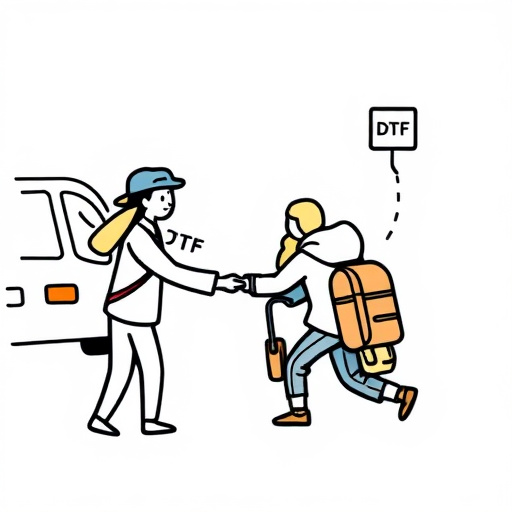
Special materials designed for direct-to-film (DTF) transfers offer a range of benefits that can significantly enhance the process and final output. Firstly, these materials ensure optimal ink absorption, allowing for precise and vibrant color reproduction. This is particularly advantageous when transferring images or designs onto various surfaces, as it provides a high level of detail and visual clarity.
When considering the use of special materials for DTF transfers, several factors come into play. One key consideration is compatibility; the material must be suitable for the chosen film type and ink to prevent adverse reactions or suboptimal results. Additionally, the ease of application and cleanup should be evaluated, as this can impact productivity and minimize waste. These specialized materials often require specific handling techniques to achieve the best outcomes, which may involve training or consultation with experts in the field.








